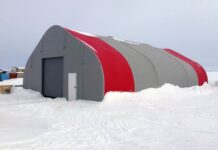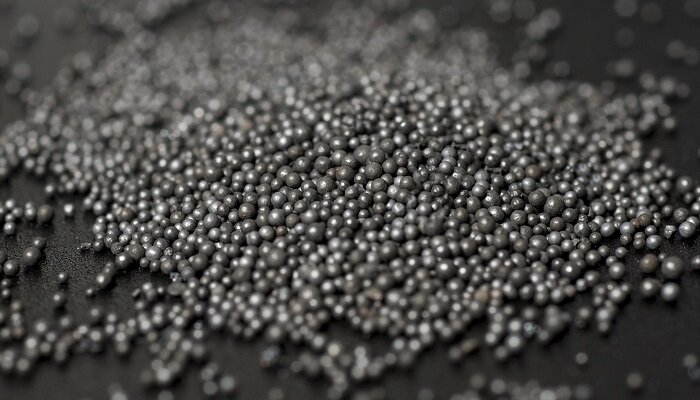Tungsten carbide, a very hard and dense material, is used for tools and cutters that require a high degree of hardness and cutting-edge strength. It is also used to make wear-resistant cutter knives and drill bits. The material is produced by sintering tungsten carbide powder in a hot mixture of carbon and silicon carbide (SiC) powders at temperatures up to about 2,400 degrees Celsius (4,000 degrees Fahrenheit).
Apart from pellets, tungsten carbide powder for sale is also pretty common as the powdered form is more appropriate for certain industrial applications including the construction of cutting tools and other abrasive materials.
The industries where tungsten carbide pellets are mainly used include the manufacturing industry, metallurgical production factories, the mining industry, and engineering machinery production.
What are the common uses of tungsten carbide pellets?
The most common uses of tungsten carbide pellets include:
- Cutting tools: Tungsten carbide pellets are used as cutting tools for metal, plastic, and other materials. They can be used to cut through tough materials such as stainless steel, titanium, and nickel alloys.
- Semiconductor manufacturing: Tungsten carbide pellets are used as a semiconductor manufacturing material in the production of integrated circuits (ICs). They provide high thermal conductivity, high strength, and good mechanical properties which are important for semiconductors.
- Abrasive materials: Tungsten carbide powder is often used as an abrasive material for grinding in stamping operations. It has excellent wear resistance and provides long life at high speeds.
What are the industrial applications of tungsten carbide pellets?
Tungsten carbide pellets are used in a wide range of industrial applications, from cutting tools to high-performance wear-resistant coating materials.
The main application for tungsten carbide pellets is their use as high-performance cutting tools. They are commonly used in machining, grinding, and sawing applications. Tungsten carbide grinding wheels can be used for polishing, grinding, and cutting.
Tungsten carbide chips are used as reservoir balls for oil shale mining operations and as abrasives in ceramics manufacturing processes.
Tungsten carbide is also used in applications where high-temperature resistance is required. These include bearings, gearboxes, and heat sinks. Another application uses tungsten carbide to make high-temperature joints between metal parts. Tungsten carbide is often used as a replacement for steel or aluminum in these applications because it can withstand temperatures up to 1,800 degrees Celsius (3,000 degrees Fahrenheit).
Tungsten carbide may also be found in industrial applications such as machining, drilling, milling, and grinding. In these situations, it is often combined with other materials such as ceramics or aluminum oxide to create components that are more durable than those made solely from tungsten carbide alone.
Why do we use tungsten carbide pellets in industrial applications?
Tungsten carbide pellets are used in industrial applications because they have high melting points and can withstand high temperatures. These properties make them ideal for welding, cutting, and other industrial processes.
Tungsten carbide pellets are used in industrial applications because they have excellent wear resistance and hardness.
The reason why tungsten carbide pellets have a high hardness is because of the high carbon content. When tungsten is melted, more carbon is added to it than iron, nickel, or cobalt. This makes it harder than other metals, which results in its excellent wear resistance. The high hardness also helps in resisting heat dissipation during friction, which results in less wear and less heat production during use.
The hardness of tungsten carbide pellets also makes them suitable for use in cutting tools such as saws and drill bits. These tools must be able to withstand extreme temperatures so that they can cut through thick materials like steel or aluminum without breaking down or wearing out quickly.
Tungsten carbide pellets are used in industrial applications because they have a high hardness and a very high strength-to-weight ratio. The hardness is because tungsten carbide has a very high melting point and does not transform into a liquid under normal conditions. This makes it impossible for the product to become molten during the machining process.
Tungsten carbide is also extremely hard, so it can withstand extreme pressure and heat without suffering from any damage or degradation of its properties. This makes tungsten carbide perfect for use in applications that require high-performance cutting tools.
Tungsten Carbide is a very hard material that is used in industrial applications. The hardness of tungsten carbide can be measured by its Brinell Hardness. The Brinell Hardness is the hardness of a material measured using a standard method that uses a 1kg weight to press against the material at 50% of its yield strength.
Tungsten carbide has many different applications in industries such as aerospace, automotive, and medical devices. The hardness of tungsten carbide makes it useful for high-stress applications such as cutting tools and drill bits.
Wrapping up
There are many common uses for tungsten carbide pellets. At the same time, they are also used in industrial applications to produce high-temperature or high-hardness materials.
Tungsten carbide pellets are used as an abrasive material in a wide variety of industries. However, these products have become increasingly popular in the automotive industry. Tungsten carbide is often used in high-performance wheels and tires that require a hard, durable surface to offer superior performance. The hardness and brittleness of tungsten carbide make it ideal for this application.
Apart from pellet and powder form, there are also tungsten composite rods and tungsten carbide grit that are used for similar purposes but in different types of situations.




































